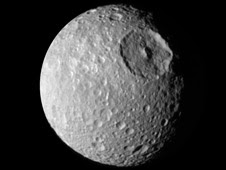When NASA’s satellite operators need accurate, real-time space-weather information, they turn to the Community Coordinated Modeling Center (CCMC) of the Space Weather Laboratory at NASA's Goddard Space Flight Center in Greenbelt, Md. The CCMC’s newest and most advanced space-weather science tool is the Integrated Space Weather Analysis (iSWA) system.
The iSWA is a robust, integrated system provides information about space weather conditions past, present, and future and, unlike many other programs currently in use, has an interface that the user can customize to suit a unique set of data requirements.

"The iSWA space-weather data analysis system offers a unique level of customization and flexibility to maintain, modify, and add new tools and data products as they become available," says Marlo Maddox, iSWA system chief developer at NASA Goddard.
iSWA draws together information about conditions from the sun to the boundary of the sun’s influence, known as the heliosphere. The iSWA systems digests information from spacecraft including the National Oceanic and Atmospheric Administration’s (NOAA) Geostationary Operational Environmental Satellites (GOES), NASA’s Solar Terrestrial Relations Observatory (STEREO), the joint European Space Agency and NASA mission Solar and Heliospheric Observatory (SOHO), and NASA's Advanced Composition Explorer (ACE).
Citizen scientists and science enthusiasts can also use the data, models, and tools of the iSWA system. Similar to the way in which armchair astronomers have used SOHO data to discover comets, enthusiasts will find the iSWA system a wonderful resource for increasing their familiarity with the concept of space weather.
The iSWA is a robust, integrated system provides information about space weather conditions past, present, and future and, unlike many other programs currently in use, has an interface that the user can customize to suit a unique set of data requirements.

"The iSWA space-weather data analysis system offers a unique level of customization and flexibility to maintain, modify, and add new tools and data products as they become available," says Marlo Maddox, iSWA system chief developer at NASA Goddard.
iSWA draws together information about conditions from the sun to the boundary of the sun’s influence, known as the heliosphere. The iSWA systems digests information from spacecraft including the National Oceanic and Atmospheric Administration’s (NOAA) Geostationary Operational Environmental Satellites (GOES), NASA’s Solar Terrestrial Relations Observatory (STEREO), the joint European Space Agency and NASA mission Solar and Heliospheric Observatory (SOHO), and NASA's Advanced Composition Explorer (ACE).
Citizen scientists and science enthusiasts can also use the data, models, and tools of the iSWA system. Similar to the way in which armchair astronomers have used SOHO data to discover comets, enthusiasts will find the iSWA system a wonderful resource for increasing their familiarity with the concept of space weather.
 Imagine holding the entire sun in the palm of your hand. Now you can. A new iPhone app developed by
Imagine holding the entire sun in the palm of your hand. Now you can. A new iPhone app developed by  On Feb. 13, 2010, NASA's Cassini spacecraft will make its closest examination yet of Mimas, an eyeball-shaped moon of Saturn that has also been likened to the Death Star of "Star Wars." The spacecraft will be returning the highest-resolution images yet of this battered satellite.
On Feb. 13, 2010, NASA's Cassini spacecraft will make its closest examination yet of Mimas, an eyeball-shaped moon of Saturn that has also been likened to the Death Star of "Star Wars." The spacecraft will be returning the highest-resolution images yet of this battered satellite.